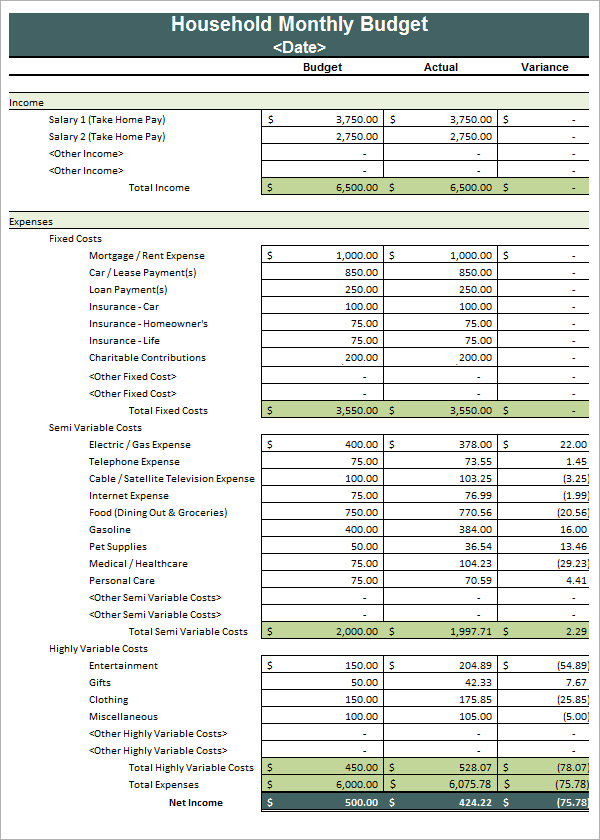
/basic-monthly-budget-worksheet-1289585_FINAL2-1e65d48c8bdb4345ad877abfc5dd4f7f.png)
- #SIMPLE MONTHLY BUDGET WORKSHEET PERCENTAGES HOW TO#
- #SIMPLE MONTHLY BUDGET WORKSHEET PERCENTAGES SERIES#
- #SIMPLE MONTHLY BUDGET WORKSHEET PERCENTAGES DOWNLOAD#
You can download this free Budget PowerPoint template from Office website, or you can also download other free PowerPoint templates and financial PPT templates for Microsoft PowerPoint 2 and Excel. 12+ FREE WORKSHEET Templates - Download Now Microsoft Word (DOC), Microsoft Excel (XLS), Google Docs, Apple (MAC) Pages. We will show how you to make a proper spreadsheet template, as well as how you can better manage your free budget so you will be able to save up for the future. This document has been signed by all parties. If the last 3 months were unusually high or low, add up all your deposits for the past year instead and divide by 12 to get a better average. Enter that amount in the budget calculator. You will recieve an email notification when the document has been completed by all parties. If your income changes from month to month, add up your total monthly deposits for the last 3 months and divide that number by 3 to get a monthly estimate. Other parties need to complete fields in the document. You have successfully completed this document.
#SIMPLE MONTHLY BUDGET WORKSHEET PERCENTAGES HOW TO#
The Monthly expenses table data lets you enter amount for different items, for example rent and mortgage or electric expenses (you can learn more about how to get free electricity), gas expenses, cell phone expenses, car payment, auto insurance, personal care, as well as expenses for credit cards, entertainment or student loans). Many or all of the products featured here are from our partners who. They should be solved by converting the common percentages to fractions.
#SIMPLE MONTHLY BUDGET WORKSHEET PERCENTAGES SERIES#
Here’s some more guidelines on setting your budget percentages: Housing: 25-35. This is a series of questions testing basic knowledge of percentages. The remaining 30 is for discretionary spending. That leaves 50 for needs, including essentials like mortgage or rent and food.

Editorial Note: Credit Karma receives compensation from third-party advertisers, but that doesn’t affect our editors’ opinions. The popular 50/30/20 rule of budgeting advises people to save 20 of their income every month. Instead, you spend 50 of your after-tax pay on needs, 30 on wants, and 20 on savings or paying off debt. This chart was created using a bar chart style buy you can easily change it if needed. Input your income and expenses, and we'll show how your spending compares to the 50/30/20 budget. The 50/30/20 rule budget is a simple way to budget that doesn’t involve detailed budgeting categories. In simple terms a family Sample Monthly Budget Templates represents their plan for the things they need and that. Then you can see a nice bar chart with your income vs.


 0 kommentar(er)
0 kommentar(er)
